Fresh fruit and vegetables are yielding massive sales in the independent sector. Aidan Fortune looks at the how the category has grown and how retailers can capitalise on it.
It’s a category that Mary Portas has identified as an “area of significant opportunity for independent retailers” and one that has led to a battle between wholesalers over which can get produce to stores first. But just why have fresh fruit and vegetables in the c-store sector become such a hot commodity?
Spar fresh and frozen director Allan Maxted believes there are four main reasons for the recent surge in demand. “The health agenda and consumers’ increasing desire to be healthy, combined with greater understanding of five-a-day are important factors, as are the economy and a greater interest in food in general, both driving an increase in scratch cooking. Then there’s aggressive promotional activity and an overall better offering in-store.”
As well as the satisfaction of providing your customers with their five-a-day, there are some healthy margins to be made on the category.
CJ Lang fresh foods sales executive Jason McLeod believes that retailers should yield bumper profits on fruit and veg. “The category offers excellent returns,” he says. “Anyone generating less than 25% after waste should be reviewing their operations.”
Simon Biddle of Simply Fresh at Biddles in Redditch, Worcestershire, agrees that if done properly, fruit and vegetables can be lucrative. “There’s a huge mark-up on fresh produce,” says Simon. “Customers are also willing to pay more if they know it is good quality. I buy at a higher price and sell at a higher price, because I know it’s the best. And my customers know this, too.”
Top of the crops
Every year brings an unexpected demand for a particular fruit or vegetable. Two years ago it was cranberries, last year’s on-trend product was blueberries, while this year cherries are expected to blossom. “With a diverse variety, cherries are often used for desserts, yogurt, juice, pies and cakes and taste great when eaten on their own,” says CJ Lang fresh foods sales executive Jason McLeod. “Asparagus also seems to have become increasingly popular of late.”
Allan Maxted of Spar believes that this year, even consumers’ fruit-buying habits will be influenced by the Jubilee. “Retailers should expect a further increase in local seasonal produce, particularly with the patriotic surge generated by the Jubilee and the Olympics,” he says. “Soft fruit will also continue to go from strength to strength.”
McLeod also recommends looking to the multiples for inspiration. “If you want to analyse trends, just pop in to your local supermarket periodically and watch sections expand and contract with seasons,” he says. “Look out for the introduction of new, less common products and varieties.”
Or if you want to do something really different, you could follow Marks and Spencer’s lead by introducing hybrid fruit. The chain recently started stocking the ‘papple’ which looks and tastes like an apple but has the skin and texture of a pear. This new addition follows Waitrose’s 2010 introduction of a ‘pineberry’ which looks like a white strawberry but tastes like a pineapple. While we may be some time away from the ‘snozberry’ of Charlie and the Chocolate Factory fame, Marks & Spencer fruit expert Shazad Rehman says that it’s proof of British consumers being more experimental when it comes to fruit and vegetables. “We know customers like to try new and interesting fruit and we hope the papple will be a fun alternative to an apple a day.”
Fruit fruit and veg make up 11% of turnover at Knight’s Budgens of Hassocks in West Sussex and the category has seen a 7% sales increase year on year. Owner David Knight says that ensuring the right balance of produce is the first step. “We adhere religiously to the 40:40:20 rule, which is 40% fruit, 40% cooking vegetables and 20% salad in winter, and then 40% fruit, 40% salad and 20% cooking vegetables in summer,” he says. “People buy more cooking vegetables in winter and more salad in summer. It seems obvious, but so many retailers don’t do it. It’s also vital you complete the changeover at the right time.”
Product knowledge is also a vital tool in selling fruit and veg. “We have one member of staff focusing on the category all of the time, and he’s trained people to manage it when he’s not there,” says David. “They are able to advise customers on speciality fruits and vegetables,” he adds. “It’s important to make a feature of any speciality products you might have, but you don’t want to scare the customers with it! That’s why it’s vital that staff can offer up advice on preparation and what foods they might go with.”
David warns that staff should also know about which fruit and vegetables should and shouldn’t be stocked together. “Bananas, for example, release an enzyme which ripens everything around it quicker, so they should be kept separate in order to avoid faster spoiling and increasing wastage,” he points out.
He believes that constant maintenance is the key to a thriving fresh fruit and veg offering. “A lot of work needs to go into a fruit and vegetable display. It needs two quality checks a day to ensure that produce looks its best. One rotten parsnip may only cost us 30p, but if left on display that will stop the whole lot from selling.”
Simon says that too often retailers will try to eke out a sale from substandard products. “They’ll discount it again and again until they have to throw it away and then they lose sales and customer goodwill,” he says. “They’d almost be better off eating it themselves to get some use out of it.”
Simon takes a hard line on quality control. “So many retailers do it wrong,” he says. “They have poor displays or substandard produce, which is unacceptable. If a customer sees even one product that is rotten then they’re likely to never purchase fruit or vegetables at that store again.”
David Harper, who runs a Loco store in Gosforth, Newcastle, agrees. “People will always pay for good quality produce,” he says. “They’d rather pay more for good quality produce than something that will spoil in a day or two.”
He’s taken to giving his fresh produce a market-stall vibe by using plenty of baskets and loose vegetables. “It’s amazing - sales of fruit and vegetables have tripled since I’ve started stocking loose produce,” says David.
David Knight agrees that being more creative with displays, and allowing people to pick their own products, can do wonders for sales. “We looked at how we set out the stock to make it look its best,” he explains. “Beforehand, we were using black plastic crates that were fine, but very wide, meaning our range was reduced. Now we use smaller wooden crates that hold less, but look better when full, and it means the range is wider without taking up more space.”
Simon agrees that you don’t need piles of stock to have a successful fresh fruit and vegetable display. He recently joined the Simply Fresh symbol group and underwent a refit. During the changes, Simon decided to cut back on the space allocated to the category by almost 66%, but found that sales didn’t suffer. “I was a bit concerned as fruit and veg is a category close to my heart, but when we started using smaller baskets with less stock, it looked great. Sales really took off and customers bought even more than before,” he says.
For stores that don’t necessarily have a choice when it comes to space, McLeod says they can still get their share. He recommends sticking to the basics such as potatoes, carrots, onions, tomatoes, mushrooms, lettuce, bananas and apples.
“To offer something different while making the most of the space you have, why not try grouping together the products needed to make a meal. You could put together veg packs for a pot of soup, or a basic stew, or just provide a salad as an accompaniment for a main meal,” says McLeod.
David Knight adds that retailers should be making the most of the natural appeal of the category. “Colour blocking is incredibly important for a fruit and vegetable display,” he says. “Fruit and vegetables are so vibrant-looking and this should be used to your advantage. There’s a reason why I put them at the front of the store, and it’s because if you have a variety of colours facing you as you walk in then you’ll be drawn right to it.”
In recent months, wholesalers and symbol groups have upped their game when it comes to supply. Musgrave recently introduced a fresh fruit and vegetable initiative for its estate. Trading director Robbie Smith says: “We wanted to create a modern greengrocer feel so we focused on local sourcing and seasonal products, showing retailers how to stock them properly, in wicker baskets for that added element of atmosphere, and providing POS material to ensure that customers know that the food is local, fresh and good value.”
Musgrave isn’t the only wholesaler to provide a tailored offering for the convenience channel. Last year Booker increased its pricemarked range of Farm Fresh fruit and vegetables to 25 lines, provided in shelf-ready packaging. Retail sales director Steve Fox says the Farm Fresh range helps retailers offer a credible fresh selection to customers. “Farm Fresh offers everything a retailer needs, such as prepacked and pricemarked. Guaranteeing 30% POR means retailers can have a credible offering where they can still make high margins. We have small outers to minimise wastage, and encourage retailers to buy little and often to maximise availability to build footfall into store.”
This focus on fresh has obviously been well received by retailers, as the group’s half-year results show like for like sales of fruit and vegetables grew by 34%.
Of course, wholesalers won’t necessarily cater for all of your fresh needs, and that’s where local suppliers step in. Even though the likes of CJ Lang may be in competition with a local offering, McLeod recommends that retailers build up a network of local suppliers and use them to their advantage.
“They are essential,” he says. “Independent retailers often struggle to get ‘pick of the crop’ when it comes to quality because quantities ordered can be lower, so partnerships with smaller growers can provide a viable solution. When a product has been purchased from local suppliers, provenance should be highlighted.”
While using local suppliers can offer something different to the multiples, Spar’s Maxted warns retailers not to depend on them too much. “Local suppliers can provide a great point of difference over the multiple competition, but they must still meet the same standards, have a real point of difference and be relevant for consumers to place value on them,” he says.
Knight’s Budgens is a firm believer in sourcing locally. “Working with a local supplier gives something for the retailer to shout about to customers,” says David. “Our local supplier provides broad beans, apples, tomatoes and strawberries, when in season. They can get us a delivery in a matter of hours if we really need it.” He claims that using local suppliers can also help retailers cut down on wastage. “Having a strong network of local suppliers can help you to keep your orders small and regular, rather than having loads in storage. If you’ve built up a good relationship, you can order produce quickly if you run out.”
He advises retailers who are worried about wastage to keep regular stock checks, rather than blindly ordering lots of produce.
“We’re tight on wastage, as all stores should be,” he says. “We keep it to 1.5% of sales through tight ordering. The staff complete daily and weekly sales checks on each fruit and vegetable, so we know how many boxes of carrots will sell in a week and on what days they’re most popular, so that we order for exactly when we need it.”
There’s no questioning that the fruit and veg category can be hard work, especially given shoppers’ high expectations. But Maxted says that retailers shouldn’t be intimidated. “If the mults can do it, then why can’t you? Fresh food is a key reason to top up so any retailer today without a robust offer is not fulfilling one of the main reasons for a consumer to use their store.”
Source
Aidan Fortune









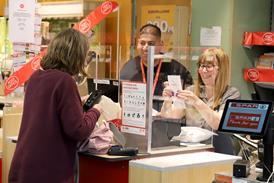

![WG-4003[58]](https://d2dyh47stel7w4.cloudfront.net/Pictures/274x183/4/5/1/353451_wg400358_6083.jpg)




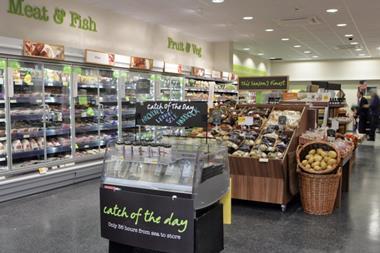
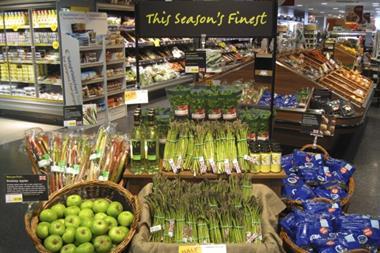
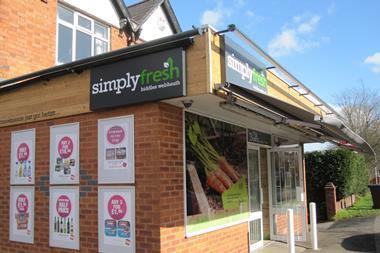
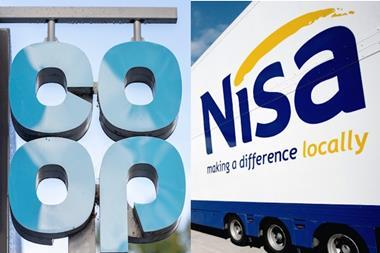




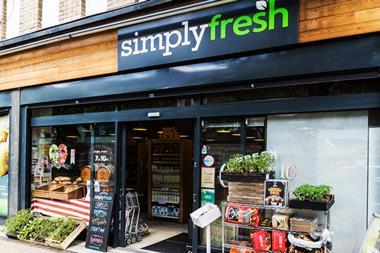
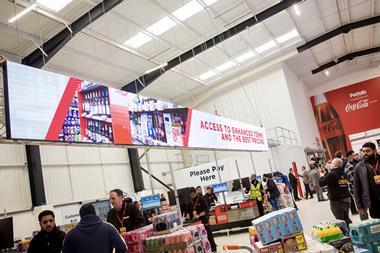
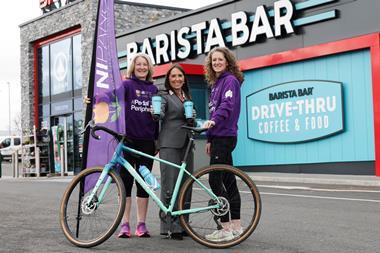

No comments yet